- Home
- About Us
- Students
- Academics
-
Faculty
- Electrical Engineering
- Automation
- Computer Science & Engineering
- Electronic Engineering
- Instrument Science and Engineering
- Micro-Nano Electronics
- School of Software
- Academy of Information Technology and Electrical Engineering
- School of Cyber Security
- Electrical and Electronic Experimental Teaching Center
- Center for Advanced Electronic Materials and Devices
- Cooperative Medianet Innovation Center
- Alumni
-
Positions
-
Forum
News
- · Bin Dai's Team Unveils the Assembly Mechanism of β-Lactoglobulin Fibrils, Providing New Insights for the Development of Functional Nanomaterials
- · Mingyi Chen’s research group has made important progress in the field of analog-to-digital converter chips for brain-computer interface
- · Progress in the Development of Semiconductor Nanomaterials to Activate Pyroptosis for Cancer Therapy
- · Jiamiao Yang’s team achieved the high precision optoelectronic reservoir computing based on complex-value encoding
- · Significant Advancements in Resonator-Enhanced Quantum Sensing Achieved by Zenguihua's Team at the School of Sensing Science and Engineering
Mingyi Chen’s research group has made important progress in the field of analog-to-digital converter chips for brain-computer interface
Recently, the research group of tenure-track associate professor Mingyi Chen, with the National Key Laboratory of Advanced Micro and Nano Manufacture Technology and the Department of Micro/Nano Electronics, School of Electronic Information and Electrical Engineering, Shanghai Jiao Tong University, has made important progress in the field of high dynamic-range analog-to-digital converter chips for brain-computer interface.
The paper has been published in the IEEE Journal of Solid-State Circuits (JSSC) titled "A 26-GΩ Input-Impedance 112-dB Dynamic-Range Two-Step Direct-Conversion Front-End With Improved Δ-Modulation for Wearable Biopotential Acquisition", in which a direct-conversion analog front-end with a dynamic range of more than 110dB for Brain-computer interface has been reported for the first time.
About the IEEE Journal of Solid-State Circuits
The IEEE Journal of Solid-State Circuits (JSSC) is one of the highest-level international journals in the field of integrated circuits, aiming to publish the latest progress and milestones in integrated circuit design, representing the top technology in the academic and industrial world.
Research Background
Brain-computer interface is a hot research area in recent years, and it is one of the representative fields of the future industry. In the field of non-invasive Brain-computer interface, how to improve the dynamic range of the analog front-end so as to withstand intense motion artifacts, remains to be a key challenge to achieve high-precision EEG acquisition. Conventional analog front-ends require significant power overhead to increase dynamic range, resulting in low energy efficiency. The direct conversion analog front-end has a high dynamic range and energy efficiency, but it faces many problems, such as input impedance, DC offset, and nonlinear distortion.
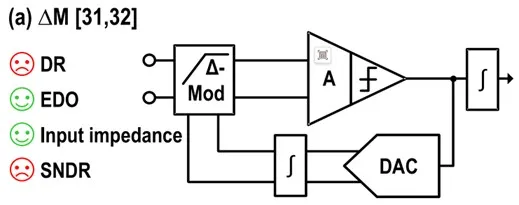
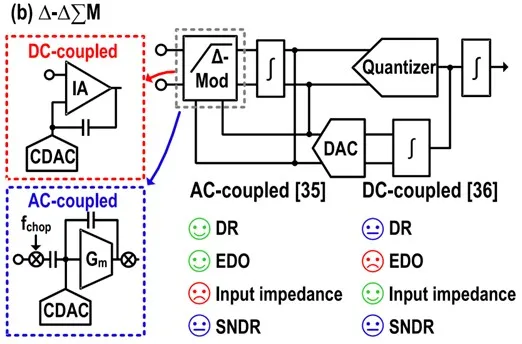
Research Content
The prototype is based on the two-step direct-conversion analog front-end architecture of ∆ modulation followed by a SAR-ADC, the feedback two-step architecture is used to alleviate the mismatch between analog and digital gains, and a new DEM approach is used to eliminate the mismatch error of DAC capacitors. Breaking through the upper limit of the dynamic range of existing direct-conversion analog front-end, it significantly improves motion artifacts tolerance, while achieving high energy efficiency.
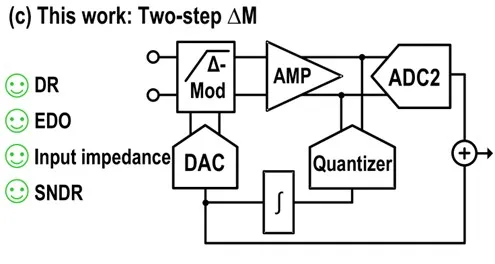
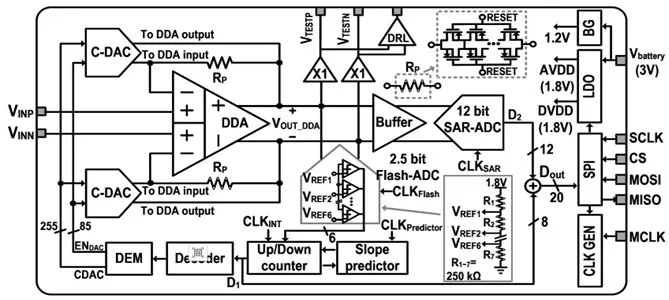
Research Results
The prototype has been fabricated with 180nm standard CMOS process. The input impedance is 26GΩ, and the dynamic range is up to 112dB, which is 20dB better than the existing direct-conversion analog front-end. It is capable of withstanding artifacts and DC offset up to +/-1.8V, which is 30 times better than conventional analog front-ends with the same gain. The power consumption is only 63μW and the quality factor (FOMDR) is up to 175dB. The successful acquisition of biopotential accompanied by intense motion artifacts solves the key challenges of non-invasive Brain-computer interface. The innovative technology can also be applied to invasive Brain-computer interface to improve the tolerance to stimulation artifacts.
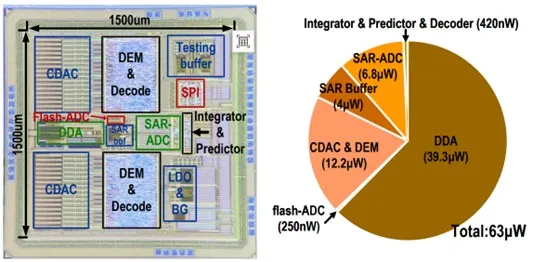
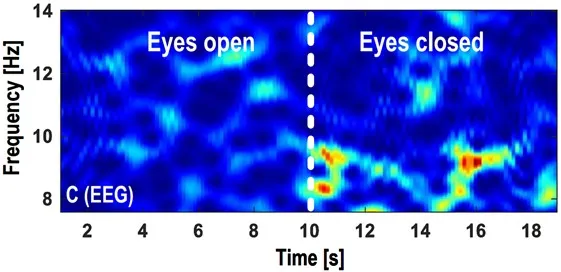
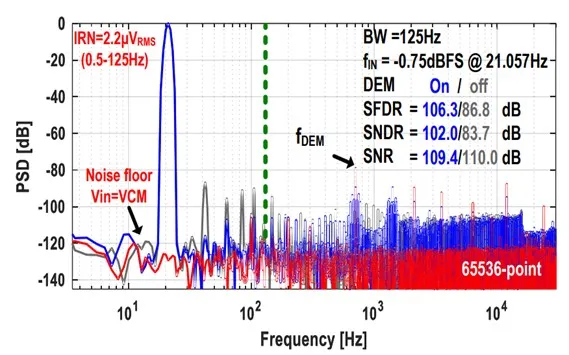
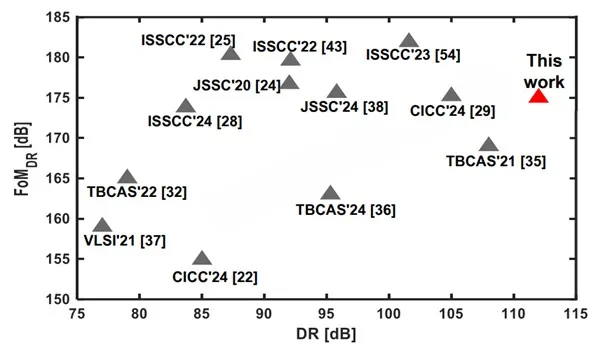
Paper information
The first author of the paper is Yuzhi Hao, a doctoral student in the School of Electronic Information and Electrical Engineering, the corresponding author is Associate Professor Mingyi Chen, and the co-authors are Professor Hua Fan of the University of Electronic Science and Technology of China, and Professor Yong Lian of Shanghai Jiao Tong University. This work was supported in part by the National Key Research and Development Program of China and in part by the National Natural Science Foundation of China.
Link:https://ieeexplore.ieee.org/document/10810351
-
Students
-
Faculty/Staff
-
Alumni
-
Vistors
-
Quick Links
